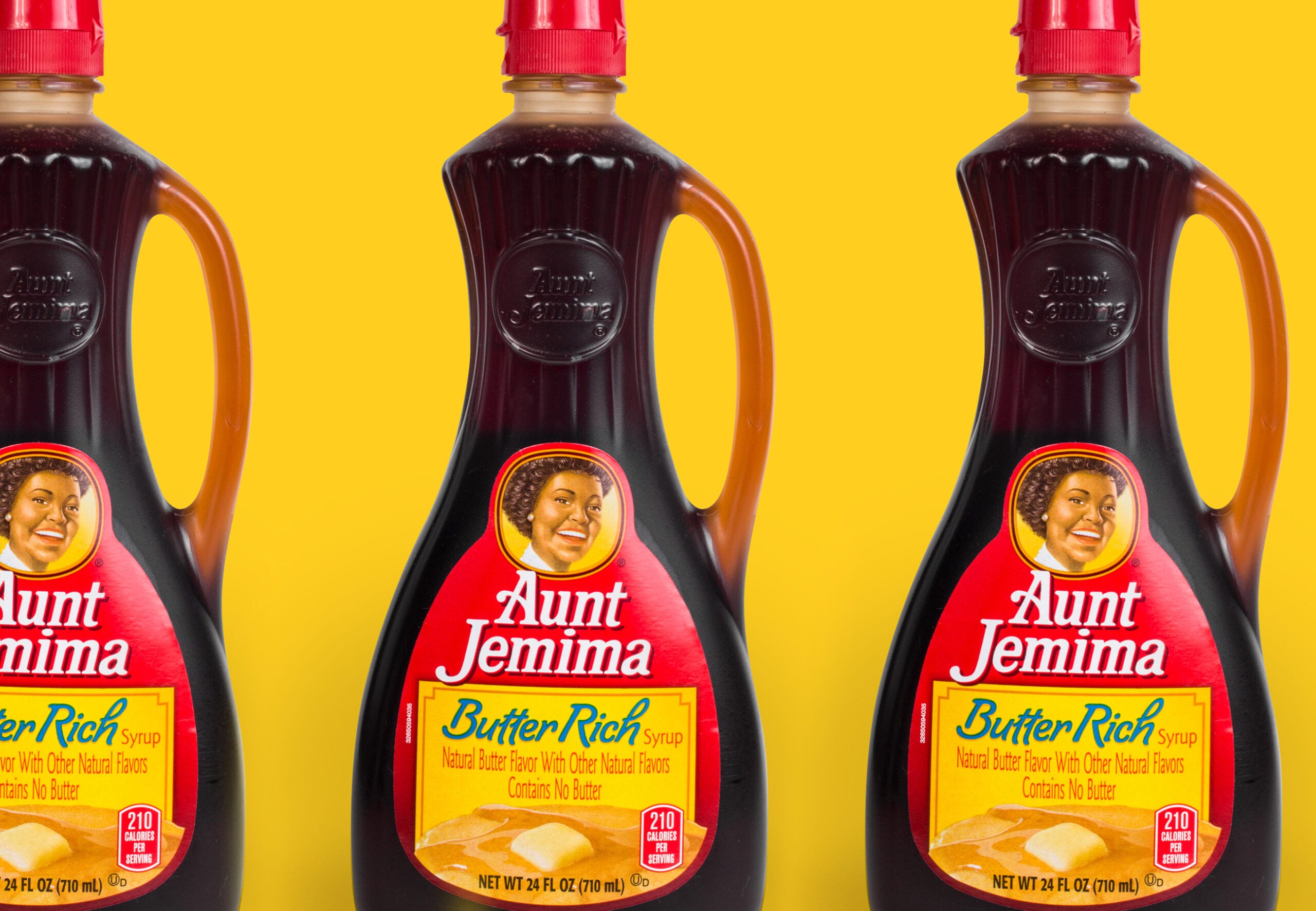Good ideas that translate into winning campaigns are the result of a rewarding process and the reason our clients trust us with their marketing dollars. The thrill of a great idea is what gets us up in the morning.
But what happens when a well-intentioned idea turns into a PR nightmare without any warning or expectation of negative backlash? When that campaign idea or tagline you found clever, even groundbreaking in the brainstorming session, is seen for the first time by a larger audience, and the campaign’s blind spots are suddenly clear as day?
Take, for example, some food brand's marketing tactics during the pandemic:
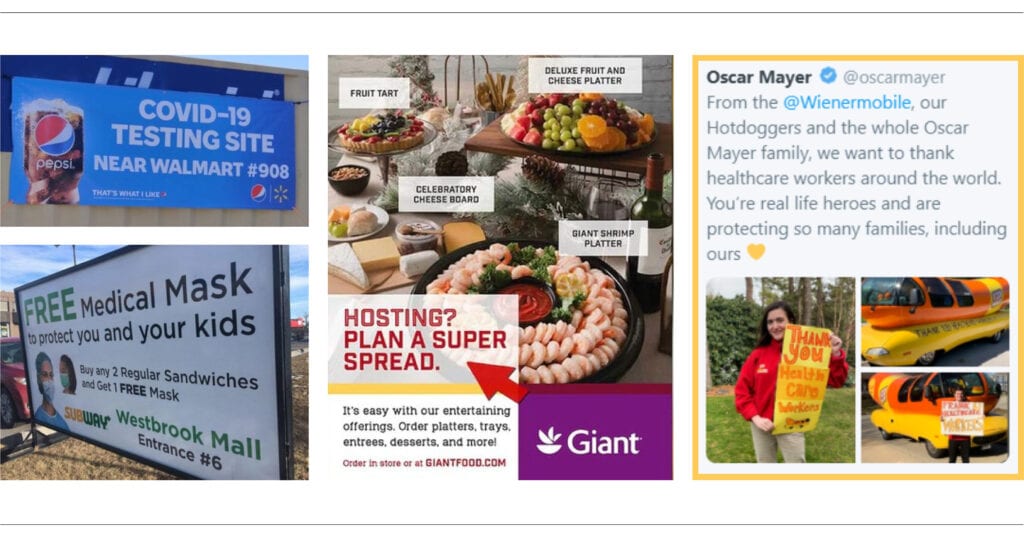
While the offences above may not be obvious at first glance, even well-intentioned and "relevant" campaigns can miss the mark. The blindspots become more apparent when we take a step back and filter them through a series of questions, like the below.
- Is this campaign being filtered through the current situation? (ex. Giant)
- Is this campaign making a positive difference / actually giving back in some way?
- Will this / could this campaign be perceived as opportunistic or exploiting a crisis to get attention?
- Is there empathy or authenticity in the campaign?
Ask yourself these questions to gauge how appropriate your campaign is, in light of COVID-19. Finally:
- What are your motivations? Are you pushing an agenda or addressing a need? Marketing should always be the latter.
Some examples of brands that approached their messaging in the pandemic well:
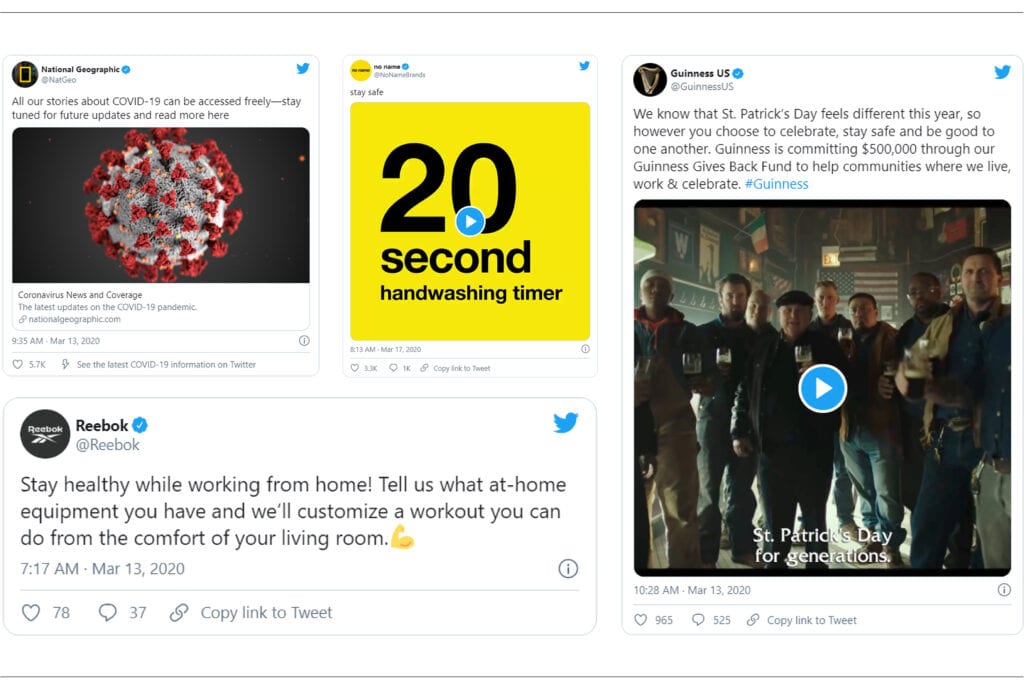
In 2020 we experienced more global crises than any year in our recent memory, from the pandemic to heightened awareness of racial discrimination, to political upheaval.
For marketers, the result is that we are now working with a new (and improved) set of rules to engage with our more educated consumer base; consumers who expect a lot more from their brands. They are no longer looking past veiled sexism, cultural appropriation, or exploitation of a tragedy. They see it and call it out, deservedly.
The only response you can't take is inaction. That doesn't mean every brand needs to take a stand on social justice – though this is encouraged; however, it does mean that every brand needs to step back and look at its identity and messaging, to ensure it's not tone deaf.
You are being consumed and received differently than before. Mistakes won't go unnoticed.
Unfortunately, there are cases where ingrained racism or sexism among creatives or leadership has filtered through to delivery, but more commonly, the strategies in question were well-intentioned, but lacked the necessary steps of validating the idea and identifying blind spots before going "to print."
In the Spotlight
Negative feedback doesn't just occur on the tactical level. In the food industry, we've seen a significant backlash against brand identities that have been staples for decades, with expensive outcomes.
- Aunt Jemima: PepsiCo finally decided to change Aunt Jemima syrup's name and mascot after years of criticism over its racist roots. The mascot, created in the late 1800s, had a profoundly racist history, from the minstrel song it was based on to its portrayal of a former slave named Nancy Green. Compared to the racist stereotype "mammy," the Aunt Jemima mascot referenced a black woman content with slavery.
- Land O' Lakes: After years of negative feedback that landed on deaf ears, the butter brand is finally removing the Indigenous woman that's been on its packaging since 1928. In a strategic effort to shift focus, "farmer-owned" was added above the name, along with campaigns highlighting dairy farmers.
- Uncle Ben's Rice: Introduced in 1946, the mascot Uncle Ben was dressed in a bow tie and addressed as "Uncle," evoking the characterization of a servant. After several feeble attempts to pivot slightly over the years, Mars has finally decided to remove the mascot and term "Uncle" from the packaging. To improve perception, Mars worked with the National Urban League, donating generously to scholarships for black chefs and investing in local Mississippi rice farms.
- Cream of Wheat: The mascot, Rastus, was the face of the brand for more than a century and referenced a term long considered racist. While in 1925, Rastus was replaced with Black chef Frank L. White, the company didn't take a strong enough pivot. It wasn't until the events of 2020 that the brand finally reconciled to remove the mascot from all packaging.
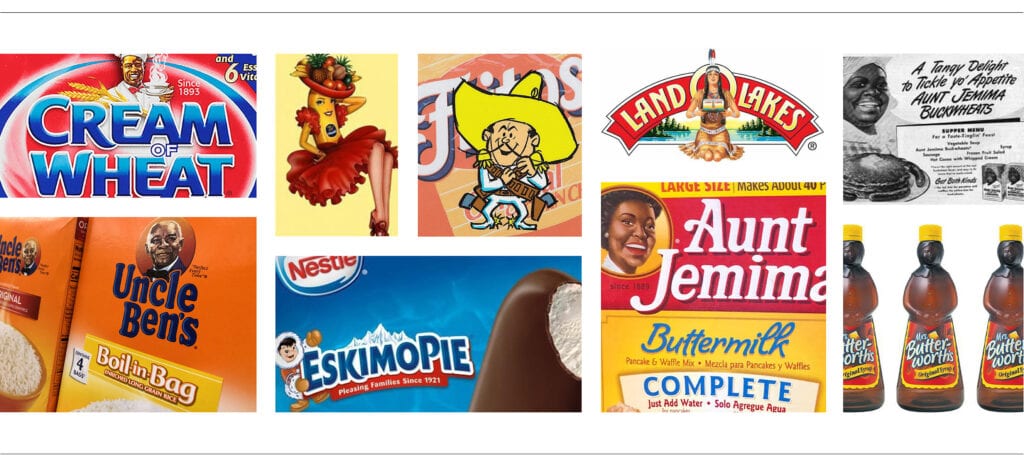
From Frito-Lay's 1970s mascot "Frito Bandito" to Chiquita's hypersexual Latina mascot to Eskimo Pies colonial reference and Mrs. Butterworth's racial caricature, there are endless examples of food brands using racial or sexist stereotypes to build an identity instantly recognizable.
Thankfully, brands are moving away from mascot stereotypes as a cheap marketing tool. The learning here is that all of these brands experienced negative feedback for decades before making the shift. If you are aware that your brand is considered tone-deaf to members of your audience, make the change now. The negative backlash only grows over time – it never goes away, particularly in the age of social media. The sooner you can make the change, no matter how significant, the faster you can build an authentic connection and reputation with consumers.
Aim Higher
Of course, in the world of food marketing, there are endless examples of recent campaigns and messaging that are missing the mark in a big way. Whether it's cultural appropriation or gendering, we only have to jump on social media to find examples (and reactions) to tone-deaf marketing. Take the below yogurt ads, clearly targeting different segments of consumers.
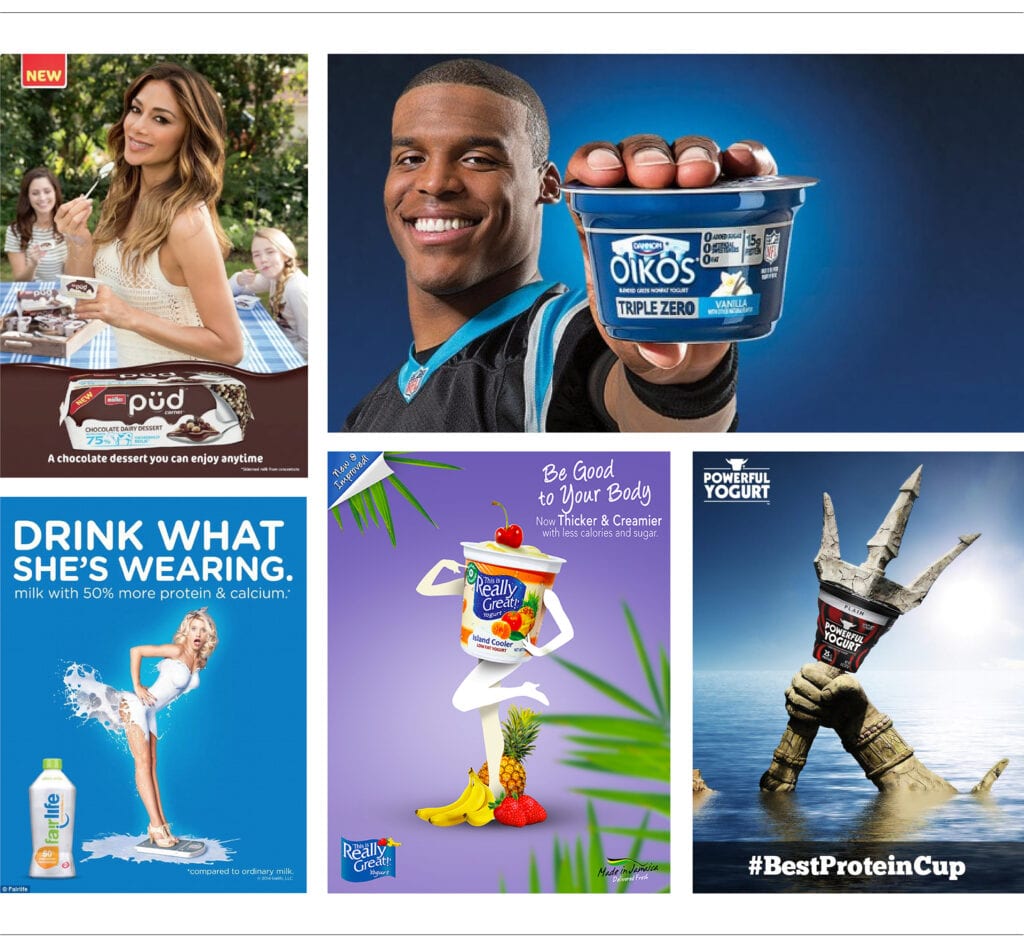
If it's not immediately apparent, these ads reinforce the stereotype that women should enjoy low calorie, light products that benefit their figure while men require fuel for their male health needs. If your marketing efforts require playing on people's insecurities, try taking a more innovative approach.
Ignoring consumer concerns and relying on cheap tactics to sell is a great way to remain status quo. What we want as marketers and business owners is the opposite: to stay ahead of the curve and to be known as leaders in our industry.
Responsible Branding
"Up to 83% of people pointed to better representing modern society as the reason marketing campaigns were impactful in a positive way."1 Consumers want to buy from brands that improve representation of equality and diversity, take a stand on social issues, and are brave enough to learn from their mistakes.
In Dieline's 2021 Trend Report, two trends to make a substantial impact on branding this next year are: (1) The Do Good Trend and (2) Self-Reflective Branding & Social Representation.2
"Brands have a responsibility to adhere to justice," said Debbie Millman, designer, writer, brand consultant, and host of the podcast Design Matters. "They have a responsibility to present themselves with the highest possible norms of the time, and to lead as opposed to follow."2
The most effective brands go out of their way to be an example, educate consumers along the way, and lead on the issues instead of simply avoiding them altogether. How do you lead with a brand that advocates for consumers instead of placating them?
Be Proactive
Diversity in Ideation
Diversity plays a necessary role in ideation and decision-making. Numerous studies have shown that a more diverse team offers a competitive advantage.4
When you have a team of creatives, marketers, strategists and decision-makers, diverse in their background, education, perspective and skill type, you will not only produce better ideas, but you will filter it through the lived experience of those individuals.
"The absence of diverse life experiences to draw from can serve as a barometer to the ideation process, creating missed opportunities to represent BIPOC positively and realistically, while building brand equity and earning new customers."3
If you don't have the diversity that you'd like to see, the first step is to create a corporate culture that is safe, inclusive and inviting to all individuals. Diversity is not simply about hiring, but also creating a culture of 100% participation and engagement. By creating an authentic reputation for positive social change and inclusion, you foster a culture that is attractive to those who would feel tokenized somewhere else.
A diverse culture requires intention on all levels and will permeate through to the decisions you make and the consumers, clients, or talent you attract. This goes for marketing agencies and food brands alike.
"Embracing diversity means redefining it within the organization and perceiving it as an essential element to innovation. Diverse thoughts are contagious and add significant value to the ideation process. Today, successful businesses create an environment that includes diverse ways of thinking."4
Listen & Ask for Feedback
To ensure your marketing efforts are not tone-deaf, you have to make a dedicated effort to have your finger on the pulse of socio-cultural shifts and build in feedback loops to see how you're being or could be perceived.
One of the easiest ways to avoid a tone-deaf campaign or packaging concept is to get it in front of as many eyes as possible early on. Too often, we hear of ideas generated in a closed room that could have been flagged by one additional opinion. Make sure to empower your in-house team to offer critical feedback and build in layered oversight. The more eyes you get on your concept before it goes to print, the higher the chance issues will be flagged.
On top of your in-house team, we recommend creative testing, focus groups, consulting with influencers well versed on the subject matter, and even having consultants on retainer to filter your ideas through contexts and communities you may not have experience with.
It's difficult to see our blind spots when we're focused on executing the job well. In an effort to avoid missing the mark, ask for feedback, take a look at how similar brands are winning or losing, and stay educated on the issues that matter.
Respond, Don't React
Even when we try to do everything right, the day will come when we miss the mark. How you respond plays a critical role in how your brand is perceived and whether you will retain or alienate those consumers. The key is to respond, not react.
For example, if you post a campaign that engenders valid negative feedback, take the time to respond with authenticity and humility, and be timely (don't wait). One of the biggest learnings brands and influencers took from 2020 is that a defensive or negative response can only exacerbate the problem and doing nothing can be equally harmful.
It's better to take correction as a learning opportunity and offer a humble response that acknowledges your mistake and highlights the steps you're taking to improve. Your audience will applaud your efforts, and you may even gain new followers as a result.
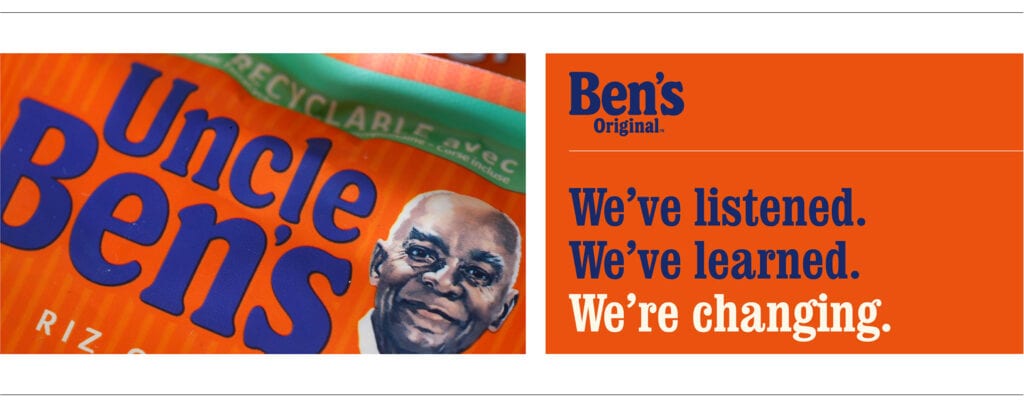
It can feel overwhelming to try to always get it right when the standards and expectations are so high.
But when our culture and society strive to do better and be better, there is no reason why we can't follow suit. Even better, lead the way. After all, advertising, branding and social marketing are powerful tools when used with intention and for positive change. Especially in the food industry when our branding, packaging and messaging are being consumed in volume and directly impact the quality of people's lives.
We have the opportunity to make a real difference in how consumers consider the food they eat, and through that lens, view society at large.
There is no problem that inclusion, ideation and innovation can't tackle. Instead of resigning ourselves to the limitations and succumbing to the status quo, it should motivate us to push forward. While it may seem easy to avoid addressing issues in such a contentious climate, the opposite is true: consumers want their brands to take a stand on the issues affecting their lives and lead with authenticity.
If that means taking the time to listen and do it well, we are up for the task.

